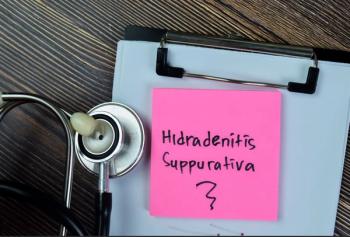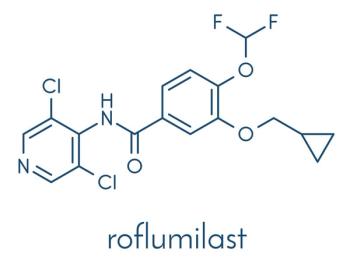
Familial Benign Pemphigus
For 25 years, a 74-year-old man had an intermittent, painful, and pruritic rash that caused cracking and erosions in the axillae and groin. It worsened with sweating and in the summer and also when clothing or skin rubbed against the eruption. The patient’s father, a paternal uncle, and all 3 of the patient’s daughters had a similar rash. Cetirizine and a combination of xipamide, bacitracin ointment, clotrimazole, and triamcinolone cream were prescribed to treat the rash.
For 25 years, a 74-year-old man had an intermittent, painful, and pruritic rash that caused cracking and erosions in the axillae and groin. It worsened with sweating and in the summer and also when clothing or skin rubbed against the eruption. The patient’s father, a paternal uncle, and all 3 of the patient’s daughters had a similar rash. Cetirizine and a combination of xipamide, bacitracin ointment, clotrimazole, and triamcinolone cream were prescribed to treat the rash.
This patient has familial benign pemphigus, or Hailey-Hailey disease, a rare, chronic, autosomal dominant disorder with incomplete penetrance. About two-thirds of patients have a family history of the rash.1 Both sexes are affected equally. Incidence is difficult to determine because of frequent misdiagnosis.
The recurrent eruptions of small, grouped vesicles, rust-colored plaques, and bullae usually progress to vegetating fissured plaques and erosions. Burning and itching accompany the eruption, which has a predilection for the intertriginous regions. Lesions often appear during adolescence as the adnexa mature.
The differential diagnosis includes intertrigo, candidiasis, and frictional or contact dermatitis.2 The lack of oral lesions and intercellular antibodies distinguishes familial benign pemphigus from other forms of pemphigus.3
Treatment poses a challenge. Drugs such as antibiotics, antifungals, corticosteroids, dapsone, methotrexate, thalidomide, etretinate, cyclosporine and, most recently, intramuscular alefacept4 may control the disease; however, they are ineffective for severe chronic forms of relapsing disease. Dermabrasion, carbon dioxide laser ablation, and pulsed dye laser therapy have been tried with variable success. Intracutaneous botulinum toxin injection to inhibit perspiration may be of benefit. Maintaining a healthy weight and keeping the body folds cool and dry can help reduce friction and prevent flares.
This patient’s symptoms were well-controlled with oral doxycycline, antiperspirant, topical clindamycin, and 1:10 vinegar soaks.
References:
REFERENCES:
1
. Hailey H, Hailey H. Familial benign chronic pemphigus.
Arch Dermatol.
1939;39:679-685.
2
. Fitzpatrick TB, Johnson RA, Wolff K, Suurmond R.
Color Atlas & Synopsis of Clinical Dermatology
. 4th ed. New York: McGraw-Hill;2001:92-93.
3
. Hamada T, Fukuda S, Sakaguchi S, et al. Molecular and clinical characterization in Japanese and Korean patients with Hailey-Haileydisease: six new mutations in the ATP2C1 gene.
J Dermatol Sci.
2008;51:31-36.
4
. Hurd DS, Johnston C, Bevins A. A case report of Hailey-Hailey disease treated with alefacept (Amevive).
Br J Dermatol.
2008;158:399-401.
Newsletter
Enhance your clinical practice with the Patient Care newsletter, offering the latest evidence-based guidelines, diagnostic insights, and treatment strategies for primary care physicians.






















































































































































































































































































